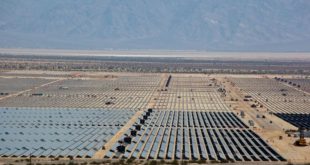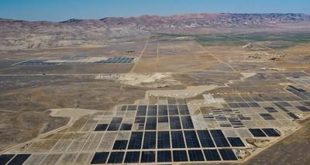IDC Energy Insights announced today the availability of a new study, Business Strategy: Trends to Watch as the Rate of North American Solar PV Installations Doubles in 2011 (Document #EI225795), that examines the technological, legislative, and business model trends that will shape the solar photovoltaic (PV) industry over the next year. Following a strong 2010 that will see around 1 GW of installations in North America, 2011 should bring over 2 GW of new installations as well as a host of new options for developers and project owners looking to reduce the levelized cost of solar energy. .
“While subsidies undeniably underpin much of this growth, the young solar PV industry has been rapidly innovating in ways that make solar PV systems more cost effective, easier to install, and easier to maintain,” said Jay Holman, lead analyst for IDC Energy Insights’ Renewable Energy Strategies program. “While North American installations trail those in Europe, current momentum represents very strong growth for the region.”
According to IDC Energy Insights, uncertainty about the future levels of subsidies – both in the United States and in Europe – are driving industry volatility and uncertainty when it comes to long-range planning. Key factors industry suppliers and utilities must watch for include:
Further cost reductions for solar PV modules, inverters, and other balance of system (BOS) components, and installation labor, will be driven by increasing volumes and continuing innovation.
Attractive feed-in tariffs in Ontario and solar carve-outs in state-level renewable portfolio standards (RPS) in the United States will drive new installations, but uncertainty over the future of U.S. federal-level incentives will remain.
Companies that provide solar leasing and power purchase agreements (PPAs) to residential and commercial property owners are expected to continue to thrive as they increase participation in the solar PV market.
The movement of intelligence from central inverters to PV modules will accelerate, even as central inverters add functionality to enable high penetration of distributed PV systems on the grid.
“Solar’s strengths warrant the subsidies it has received, and the subsidies have helped the industry achieve lower costs through increased economies of scale, improved reliability, and improved performance through technological innovation,” continued Mr. Holman. “The industry is still young enough that these innovations are continuing at a rapid pace, and these factors, combined with apparent commitment to solar subsidies from governments around the world, suggest a strong solar industry for the foreseeable future.”
This IDC Energy Insights report provides an overview of the North American solar PV market, including a look at current and anticipated costs of PV systems and components, a summary of government incentive programs that both drive the market and contribute to its volatility, an examination of the impact of recent developments in the financing of solar PV systems, and an evaluation of technical developments in the industry. Insights into the future of the industry are presented, along with recommendations for industry vendors and utilities participating in this rapidly growing and evolving market.
Read Jay Holman’s blog post on this topic in the IDC Energy Insights Community and join the discussions!
 Alternative Energy HQ solar power for homes, wind energy, and bio fuel issues
Alternative Energy HQ solar power for homes, wind energy, and bio fuel issues






